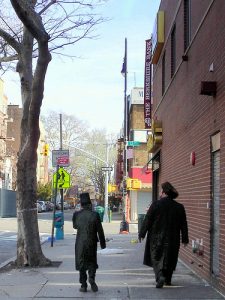Now and again, I have the opportunity to venture beyond my customary haunts and spend a weekend in another place and amidst another congregation as a scholar-in-residence. These “gigs,” as some of my colleagues are wont to call them, are no walk in the park. Yes, most pay handsomely. But they also give new meaning to ‘singing for one’s supper’: You’re called on to prepare and deliver anywhere from three to five different presentations within the space of 25 hours and sometimes on a Sunday morning, too. And since expectations tend to run really high, you have to be on your toes at all times.

Time-consuming and emotionally draining, these ventures can also be hazardous to your health. If it’s your practice not to travel by car on Shabbat, you just might find yourself escorted along a highway or a deserted stretch with no sidewalks at 11 p.m. of a Friday night, wondering how on earth you managed to get yourself into this scary situation.
It’s worth it. There’s nothing like a close encounter with contemporary Jewish life at the grass roots to set you straight. Talk about a cold bath of reality. Your high minded theories quickly go out the window when you’re face to face with the direct consequences of changing demographics, widespread intermarriage, dwindling communal resources and a gnawing sense of frustration. Comforting bromides about the importance of continuity and constancy simply won’t do.
Having just completed a scholar-in-residence weekend at Temple Beth El of Lancaster, Pennsylvania, I speak from experience. I returned home from my visit to this intellectually engaged and searching Conservative congregation feeling rather sobered, even chastened. Despite a keen sense of community and deep reservoirs of good will, its children have either moved away for good or they’ve intermarried. Or both.
Some have left the fold altogether; others feel much more comfortable within the precincts of the Reform rather than the Conservative movement. One way or another, a younger generation is not much in evidence at Temple Beth El. To compound matters, the local JCC has closed its doors for want of support and the local day school is no more. And yet, the members of Temple Beth El keep at it, cautiously optimistic that the situation will turn around one of these days.
I suspect that I was invited to Lancaster in the hope that my work on the American Jewish experience might shed some light on why things are the way they are: History pressed into the service of the present and the future. I hope I didn’t disappoint. All the same, I think I took away more from my scholar-in-residency than I brought to it.
Temple Beth El: I’m rooting for you.


